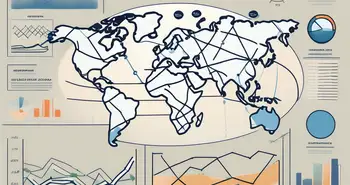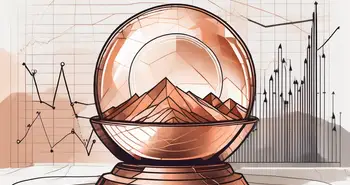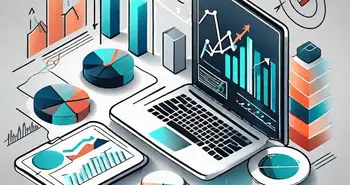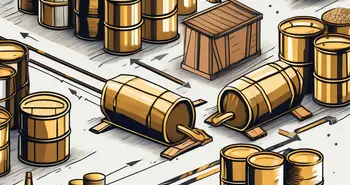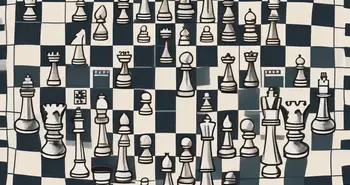Exploring the Lucrative Iron Market: Trends, Analysis, and Opportunities
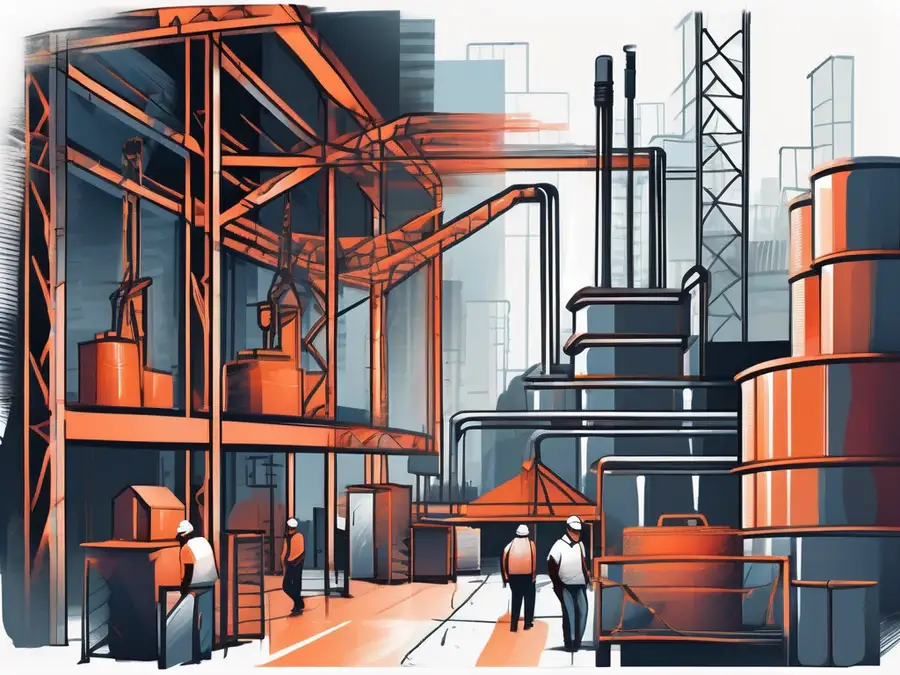
I have been deeply involved in the iron industry for over two decades, witnessing its growth, transformations, and challenges. In this article, I will take you on a journey through the iron market, providing valuable insights into its dynamics, trends, and future prospects. Whether you are a seasoned investor, a curious industry enthusiast, or simply someone interested in understanding this lucrative market, this article will surely provide you with a comprehensive overview.
Understanding the Iron Market
The iron market, also known as the steel industry, is a pillar of the global economy. It encompasses various stages, from the extraction of iron ore to its transformation into steel for use in construction, automotive, energy, and many other sectors. To fully grasp the iron market's intricacies, it is essential to start with the basics.
The iron market plays a vital role in supporting economic growth and development worldwide. It is a key contributor to infrastructure projects, providing the necessary materials for building bridges, roads, and buildings. Additionally, the automotive industry heavily relies on steel for manufacturing vehicles, while the energy sector utilizes steel in the construction of power plants and pipelines.
The Basics of the Iron Industry
Iron ore, one of the most abundant minerals on Earth, serves as the primary source for iron production. This versatile material is found in various geological formations and is extracted through different mining methods, including open-pit mining and underground mining.
Open-pit mining involves the excavation of large open pits or quarries, where heavy machinery is used to extract iron ore from the earth's crust. This method is commonly employed when the ore is located close to the surface, making it more accessible and cost-effective to extract.
On the other hand, underground mining is utilized when the iron ore deposits are located deeper underground. This method involves the construction of tunnels and shafts to access the ore, with specialized equipment and techniques used to extract it safely and efficiently.
Once mined, the ore is transported to processing plants where it undergoes a series of steps to transform it into a usable form. The first step is crushing, where the ore is broken down into smaller pieces to facilitate further processing. Grinding follows, where the ore is pulverized into a fine powder.
After grinding, magnetic separation is employed to separate the iron ore from other minerals and impurities. This process utilizes magnets to attract and separate the magnetic iron particles, resulting in a concentrated iron product known as iron concentrate.
Iron concentrate is then further processed in blast furnaces, which are towering structures made of steel and lined with refractory bricks. Inside the blast furnace, iron concentrate is mixed with coke (a form of coal) and limestone. The mixture is then subjected to high temperatures, reaching up to 2,500 degrees Fahrenheit.
During the smelting process, the coke serves as a source of carbon, which reacts with the oxygen in the iron ore to remove impurities and produce carbon dioxide gas. The limestone acts as a flux, helping to remove impurities and create a molten slag that floats on top of the molten iron.
The molten iron, heavier than the slag, sinks to the bottom of the blast furnace and is periodically tapped off. This molten iron is then transported to steel mills, where it undergoes additional refining processes to convert it into steel.
The resulting steel can be further processed into various shapes, sizes, and grades to meet diverse market demands. Steel mills utilize advanced technologies, such as continuous casting and rolling, to produce steel products with precise specifications.
Key Players in the Iron Market
When analyzing the iron market, it is crucial to consider the major players shaping its landscape. Among the key players are mining companies, steel producers, equipment manufacturers, and end-users across different sectors. These entities work together to ensure a steady supply of iron ore, efficient production processes, and the delivery of high-quality steel products.
Industry giants such as BHP Group, Rio Tinto, ArcelorMittal, and POSCO have a significant influence, both in terms of production capacity and market share. These multinational companies operate mines, steel mills, and distribution networks on a global scale, enabling them to serve customers in various regions and industries.
However, it is worth noting that the iron market is also characterized by the presence of numerous small and medium-sized enterprises (SMEs) that contribute to the industry's vibrancy and competitiveness. These SMEs often specialize in niche segments or operate regionally, catering to specific customer requirements. They play a vital role in fostering innovation and providing customized solutions to meet the unique needs of their clients.
Furthermore, the iron market is influenced by various factors, including government policies, environmental regulations, and global economic conditions. Changes in these factors can have a significant impact on the dynamics of the iron market, affecting supply and demand, prices, and investment decisions.
In conclusion, the iron market is a complex and dynamic industry that plays a crucial role in supporting economic growth and development. Understanding its fundamentals, from the extraction of iron ore to the production of steel, is essential for comprehending its global significance and the key players involved.
Current Trends in the Iron Market
The iron market, like any industry, is subject to continuous evolution. To stay ahead, it is crucial to monitor the latest trends that shape its trajectory. Two key trends are currently reshaping the iron market: technological advancements and a growing emphasis on sustainability.
Technological Advancements Impacting the Market
The iron market is witnessing significant advancements in technology, revolutionizing several aspects of the industry. Automation, robotics, and artificial intelligence are increasingly integrated into mining and steel production processes, enhancing efficiency, productivity, and safety. These advancements allow for the extraction of iron ore from more challenging locations, such as deeper underground deposits, enabling the industry to meet growing demands.
Moreover, digitalization and the Internet of Things (IoT) have enabled real-time monitoring of equipment, predictive maintenance, and optimization of production processes. This ensures optimal resource utilization, reduces downtime, and enhances product quality. The integration of technology across the value chain empowers the iron market with unprecedented capabilities and paves the way for a future of smart and sustainable production.
Environmental and Sustainability Trends
The iron industry, historically criticized for its environmental footprint, is undergoing a profound transformation towards sustainability. With increasing global concern for climate change, the industry has adopted stringent environmental regulations, encouraging the reduction of emissions and responsible resource consumption.
One notable approach is the use of renewable energy sources in steel production, such as solar and wind power. Together with innovative recycling techniques and energy-efficient processes, the iron market is gradually reducing its carbon footprint. Additionally, the industry is exploring alternative materials and production methods to minimize waste and energy consumption, ultimately contributing to a greener future.
Comprehensive Analysis of the Iron Market
Although trends shape the iron market, it is equally important to consider the broader economic and political factors that influence its dynamics.
Economic Factors Influencing the Iron Market
The iron market's performance is intrinsically linked to global economic indicators, such as GDP growth, industrial production, and construction activities. Economic slowdowns can lead to a decrease in steel demand, affecting iron prices and production levels. On the other hand, rapid industrialization and urbanization in emerging markets fuel the demand for steel, driving growth opportunities for the iron industry.
Political and Regulatory Impacts
The iron market is subject to political and regulatory influences that can significantly shape its landscape. Trade policies, tariffs, and geopolitical tensions can disrupt the flow of iron ore and steel, affecting prices and market dynamics. Furthermore, environmental regulations, labor laws, and safety standards imposed by governments impact the cost structure and operating conditions for companies across the iron value chain.
Future Opportunities in the Iron Market
Looking ahead, the iron market is poised for further growth and presents numerous opportunities for investors, industry professionals, and innovators.
Emerging Markets and Growth Potential
The rise of emerging markets, particularly in Asia, offers immense growth potential for the iron industry. Rapid urbanization and infrastructure development in countries such as China and India necessitate substantial steel consumption. Moreover, the expansion of renewable energy projects and the development of electric vehicles drive the demand for advanced steel alloys, offering new market segments and opportunities.
Innovation and Future Prospects in the Iron Industry
Innovation is at the heart of the iron industry's future prospects. The development of advanced manufacturing techniques, alloy design, and product customization enable the creation of high-performance steels that cater to specific industry needs. Furthermore, the integration of blockchain technology in supply chains enhances transparency and traceability, fostering customer confidence and enabling efficient resource management.
As an industry expert, I have witnessed the remarkable resilience and adaptability of the iron market. From overcoming economic downturns to embracing sustainability, the industry has continuously evolved to meet the world's growing needs. My personal advice to those interested in engaging with the iron market is to stay informed, embrace innovation, and seek collaboration. By doing so, you will not only tap into countless opportunities but also contribute to shaping a more sustainable and prosperous iron industry.
FAQ
1. What is the iron market?
The iron market encompasses the mining, processing, and production of iron ore and steel for various industries, including construction, automotive, and energy.
2. What are the trends in the iron market?
Key trends in the iron market include technological advancements, such as automation and digitalization, and a growing emphasis on sustainability and reducing environmental impact.
3. Who are the major players in the iron market?
Major players in the iron market include mining companies, steel producers, equipment manufacturers, and end-users across various sectors. Industry giants like BHP Group, Rio Tinto, ArcelorMittal, and POSCO dominate the market.
4. What influences the iron market?
The iron market is influenced by economic factors like GDP growth and construction activities, as well as political and regulatory impacts such as trade policies and environmental regulations.
5. What are the future opportunities in the iron market?
The iron market offers growth opportunities in emerging markets, such as Asia, and through innovation in manufacturing techniques and the development of advanced high-performance steels.
As you navigate the complexities and opportunities of the iron market, Morpher presents a seamless and innovative trading experience tailored to your needs. With its zero-fee structure, infinite liquidity, and the ability to engage in fractional investing and short selling, Morpher.com is the ideal platform for investors looking to capitalize on the trends and growth potential within the iron industry. Embrace the future of trading with the safety and control of the Morpher Wallet, and take advantage of up to 10x leverage to amplify your trades. Ready to transform your investing journey? Sign Up and Get Your Free Sign Up Bonus today and join the revolution with Morpher.

Disclaimer: All investments involve risk, and the past performance of a security, industry, sector, market, financial product, trading strategy, or individual’s trading does not guarantee future results or returns. Investors are fully responsible for any investment decisions they make. Such decisions should be based solely on an evaluation of their financial circumstances, investment objectives, risk tolerance, and liquidity needs. This post does not constitute investment advice.

Painless trading for everyone
Hundreds of markets all in one place - Apple, Bitcoin, Gold, Watches, NFTs, Sneakers and so much more.

Painless trading for everyone
Hundreds of markets all in one place - Apple, Bitcoin, Gold, Watches, NFTs, Sneakers and so much more.

